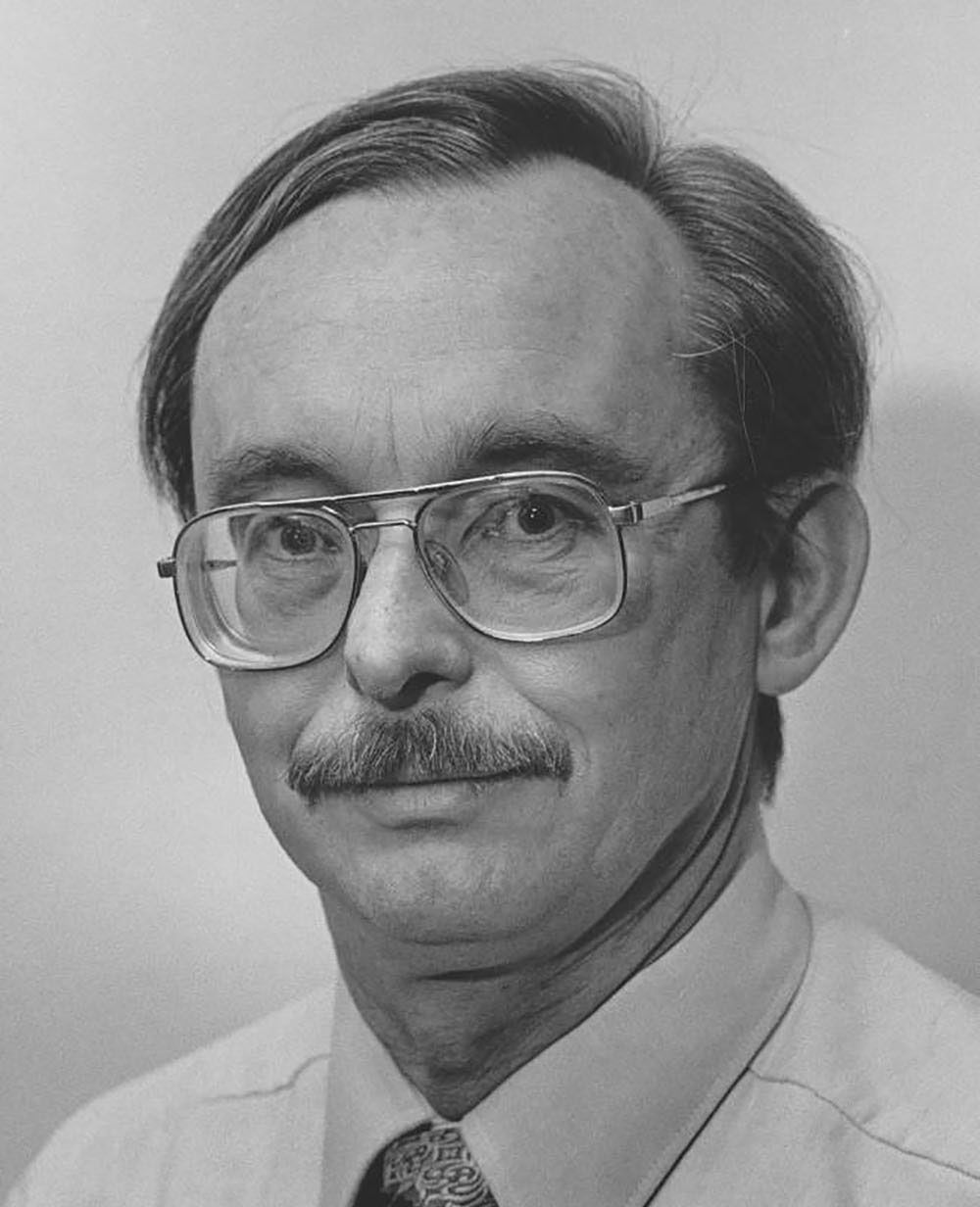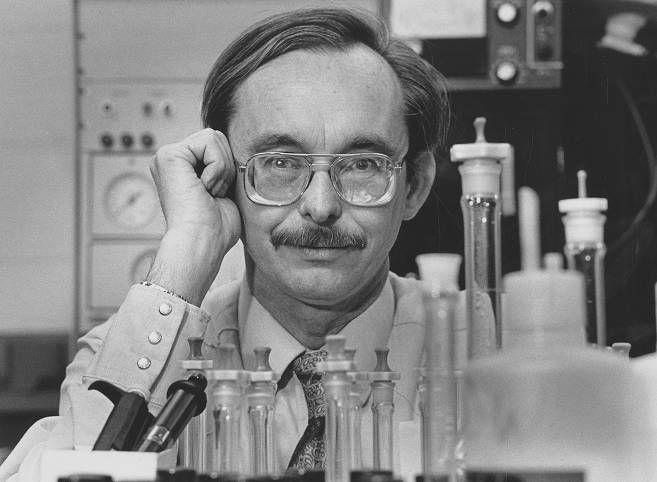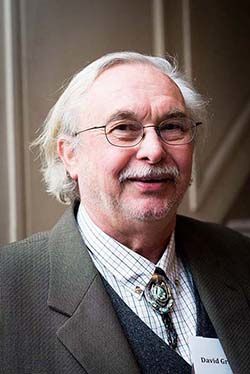From the Chair
End of the ‘G’ epoch: David Grandstaff’s epic career at Temple University
Alice Weeks founded our department determined to build a home for earth science, guaranteeing access, useful research and caring instructors here at Temple. In 1973, David Grandstaff joined that effort as an instructor. He had recently completed his master’s on his way toward earning his PhD in 1974, after which he rose to the rank of assistant professor. Later, David would twice chair the department, first in 1987 and again in 2005.
Along the way he earned recognition through teaching awards and as awardee of the Paul Eberman Award for Research Excellence. And sometime during his life at Temple he evolved from David into the ever-present, essential and enigmatic “G.”
During his fifty years at Temple, David taught thousands of students in courses spanning general education and graduate level including the history of earth and its life, physical geology, climate change, environmental seminar and a myriad of geochemistry courses. In the words of his students:
- “As a professor, Dr. Grandstaff can be tough. He makes sure you have an understanding of the material, and constantly asks you questions to make sure you've been studying. You can't get away with not knowing what you should know in the class!”
- He “held everyone in the class to a standard much higher than any professor I had previously encountered in my undergraduate career. Because cramming for an exam won't cut it, because he insists on understanding, students retain what they learn in David's classes.”
But students also saw that beneath the rigor and tough exterior, David is a “big softy when it comes to his geology and geochemistry students.” According to students:
- “Dr. Grandstaff is not just a figure in the classroom, he is a friendly face on the third floor of Beury Hall and is always more than happy to stop and chat with me and other students.”
- “He has helped me outside of academics as well. During my time at Temple, he always had time to talk to me about research, the future of my career, and life in general.”
David has been a curious and persistent researcher investigating a wide range of topics in wide flung parts of the world. My first experience with his research was his widely publicized work with George Myer on lead contamination of urban snow, which I still remember learning about in school soon after its publication and decades before I met them.
In total, with students, colleagues in the department, such as George Myer and Gene Ulmer, and other collaborators, David authored or co-authored and presented more than 275 publications.
In doing this original work, he advised 37 masters students and served on the committees of 93 other master and doctoral students. Many of these students earned best paper awards for the work they conducted under David’s guidance.
The combination of a curious mind, an openness to discussion, a positive and supportive attitude and the resulting great depth of knowledge, David has been the go-to resource for helping students succeed with their research.
Now emeritus professor, we continue to learn from David. He, more than anyone, has always been quietly present, always in the lab with students, checking equipment and solving problems. Always a face ready to smile and greet students at the tables or in the halls.
David, it seems, is still very much teaching all of us in the EES Department.
Sincerely,
Nick Davatzes
Chair
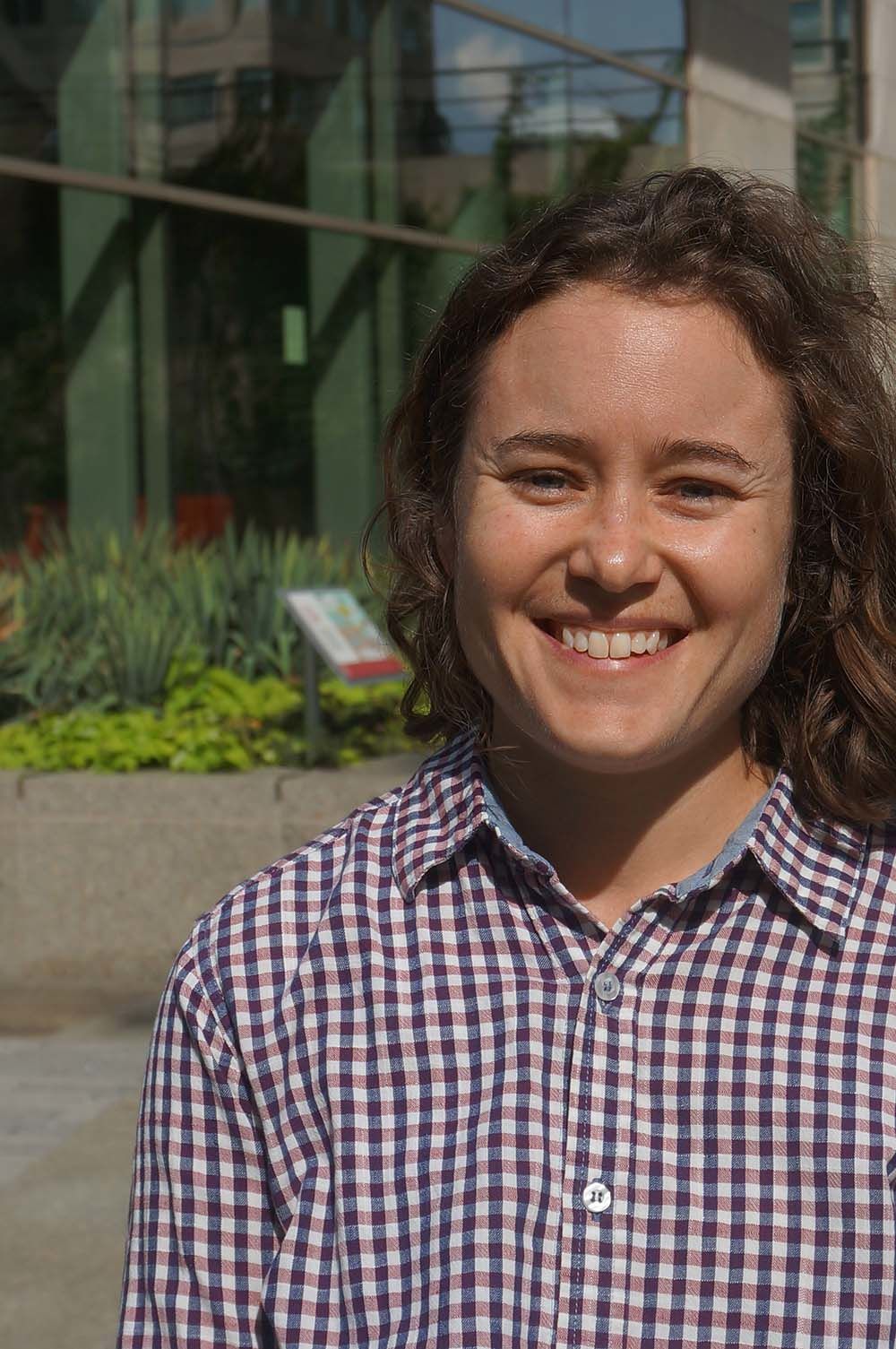
Rebecca Beadling brings climate modeling to EES
Assistant Professor Rebecca “Becki” Beadling joined the EES Department in Fall of 2022, after working jointly at NOAA’s Geophysical Fluid Dynamics Laboratory (NOAA-GFDL) and Princeton’s Atmospheric and Oceanic Sciences program under the NOAA Climate and Global Change Postdoctoral Fellowship program.
“She joined the department at a time of change as we continue to develop an enhanced environmental science curriculum to enable students to focus on climate change as well as applied ecology, geochemistry or hydrology,” explained Nick Davatzes, department chair.
As a climate scientist/oceanographer who uses observations and climate model simulations to understand the ocean’s role in the climate system, Beadling’s research particularly focuses on ocean circulation and processes within the Southern Ocean, their projected changes under continued warming and the role these remote processes play in the global climate.
Beadling collaborates closely with NOAA-GFDL where she is a member of the High-Resolution Model Development Team, contributing to the development of the ocean component of high resolution coupled climate models. She is also actively involved in international climate model intercomparison projects and serves as a member of the World Climate Research Programme’s Coupled Model Intercomparison Project Model (CMIP) Benchmarking Task Team.
“This CMIP task team aims to develop methods for systematic and rapid assessment of models participating in the next phase of CMIP,” said Beadling, “and will play a key role in shaping future climate model development globally and model analysis for the next Intergovernmental Panel on Climate Change (IPCC) report.”
Since joining EES, Beadling has served as a research mentor to students from across CST. In her Ocean Climate Connections (OCC) Research Group, students are investigating the global climate response to the melting of the Antarctic Ice Sheet using climate model simulations to understand regional and global patterns of sea level rise that result from changing ocean circulation.
Beadling will welcome more students and post-docs over the coming year as she leads her recently funded NSF project Constraining the role of the Antarctic Slope Current on tracer exchange at the Antarctic margin: insight from model hierarchies. “This project will deepen our understanding of ocean circulation near the Antarctic margin and the role it plays in the climate system,” said Beadling.
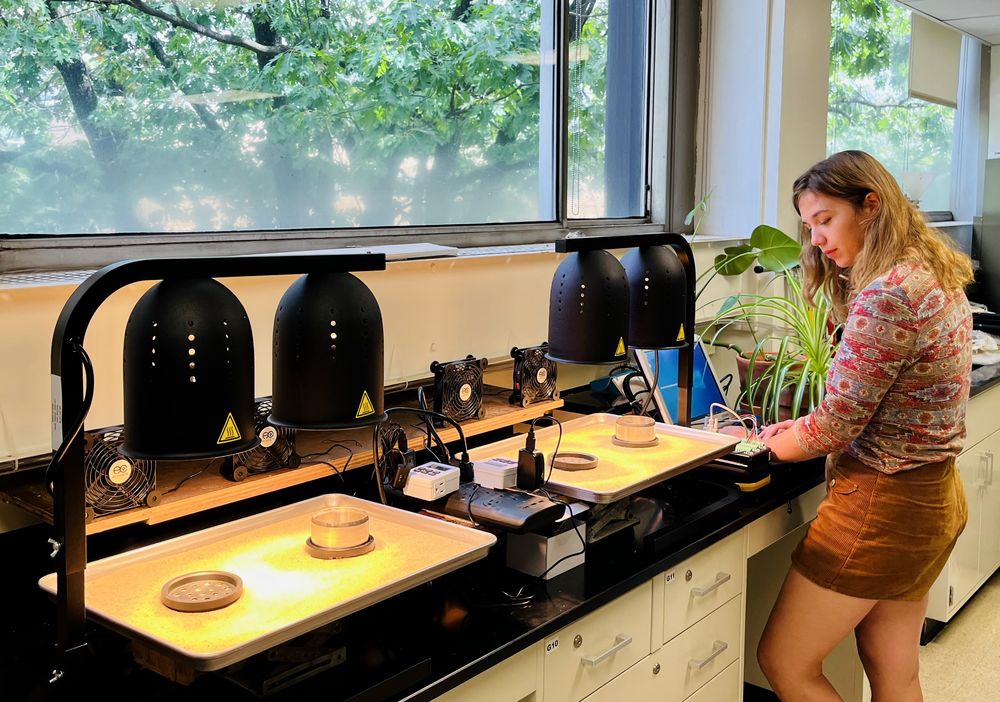
Lucy Archibald, CST ’23, part of ORISE internship at EPA
A former president of the Geo Club and geology major, Lucy Archibald now has an internship with the Environmental Protection Agency Region 3 office in Philadelphia. She’s part of an internship program for recent graduates housed at the Oak Ridge Institute for Science and Education (ORISE), a U.S. Department of Energy (DOE) asset dedicated to enabling critical scientific and health initiatives of the department and its laboratory system by providing expertise in STEM workforce development, scientific and technical reviews, and evaluation of radiation exposure and environmental contamination.
ORISE connects the most talented college students, recent graduates and postdocs to STEM internship programs closely aligned with the interests of a variety of research facilities, including those managed for the DOE, EPA and other federal agencies.
“I am working with the Permits Section to finalize agricultural assessment reports for each state in the region, and with the Wetlands Branch to fill regulation gaps in state wetlands protection programs,” explained Archibald, who career-wise is interested in continuing her current work in regulation and oversight, but ultimately would like a position that includes a fieldwork component as well.
After graduation, during the spring and summer of 2023, Archibald succeeded in obtaining funding through the NSF’s Geoscience Research Experiences for Post-Baccalaureate Students (GEO-REPS) Supplemental Funding Opportunity program to continue her work in Associate Professor Sujith Ravi’s lab. “I was exploring the effects of salinity and compaction on the hydraulic properties of soil,” said Archibald, “and considering these changes as they apply to urban stormwater control systems.”
Archibald presented her findings at the European Geophysical Union (EGU) meeting in Vienna, Austria. “Presenting at EGU was a little intimidating, but ultimately one of my favorite experiences I’ve had as a scientist,” Archibald said. “Engaging with the geoscience community on the global scale was both validating and inspiring, and I am endlessly grateful to have had that opportunity.”
While Archibald admits some pandemic restrictions may have negatively impacted her career preparedness, she was impressed with how Temple was able to adapt well to the unique situation and how open faculty were to her own ideas on how to build hands-on skills during mandatory isolation
“I am so grateful for Temple EES,” she said. “A small community with diverse expertise and casual attitude removes many of the anxieties of a college program and fosters comfortable learning from unique experiences. I always felt supported by EES.”
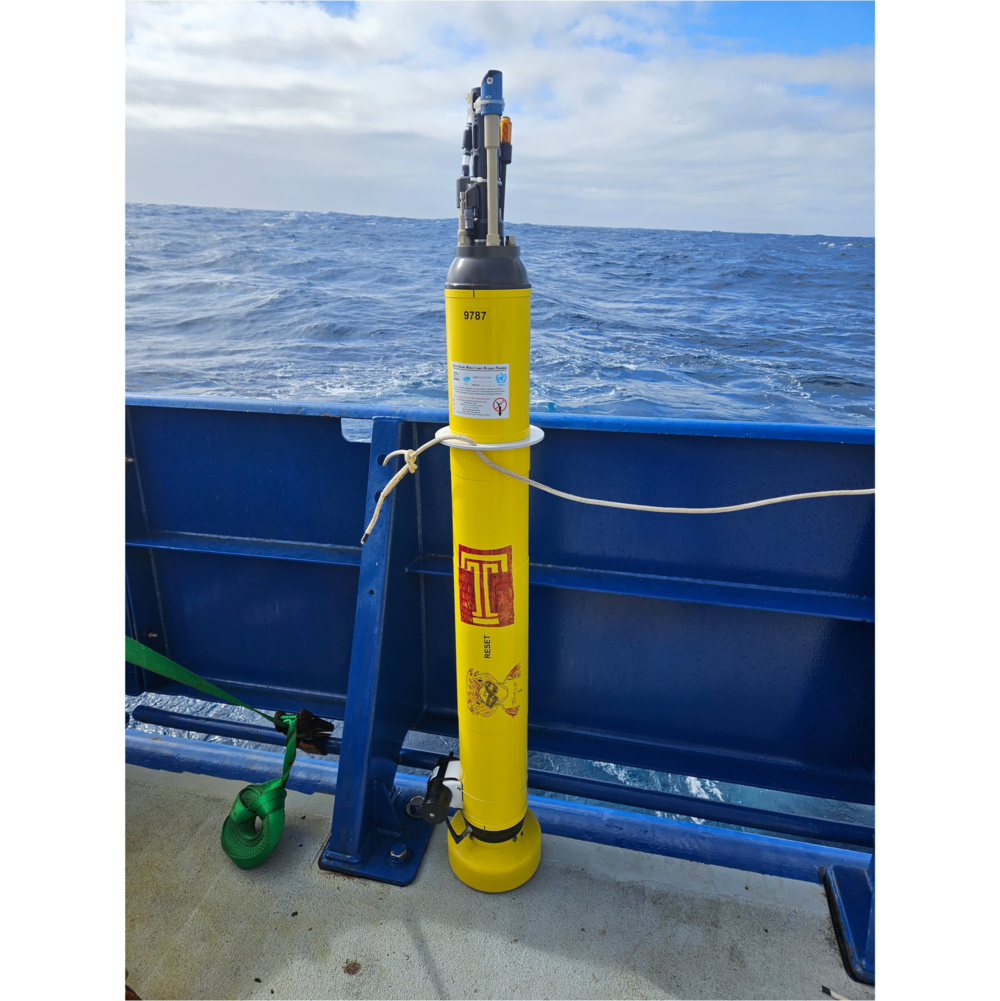
Hooter the Owl float collecting data in Southern Ocean
The EES course Observing and Modeling Climate Change gives students the tools to understand climate change through hands-on data analysis. Translating her expertise in climate data analysis, climate modeling and open-source software, Assistant Professor Rebecca Beadling designed the course for both undergraduate and graduate students.
Beadling and her students have “adopted” an oceanic profiling float. Named “Hooter the Owl” and decorated with Temple’s logo, and the float was deployed in Southern Ocean in August of 2023. The project is part of the Argo program, an array of floats observing the ocean in real time.
Hooter will float freely with ocean currents and traverse up and down the upper 2000 meters of the water column over the next 5 to 7 years, collecting data and sending it back to satellites each time it surfaces. Not only will the data Hooter collects be used for transformative science as part of the observational array for the NSF-funded Southern Ocean Carbon and Climate Observations and Modeling (SOCCOM) project, but it will be analyzed in Beadling’s classroom by EES students to learn about ocean processes.
Track the Hooter the Owl float here.


